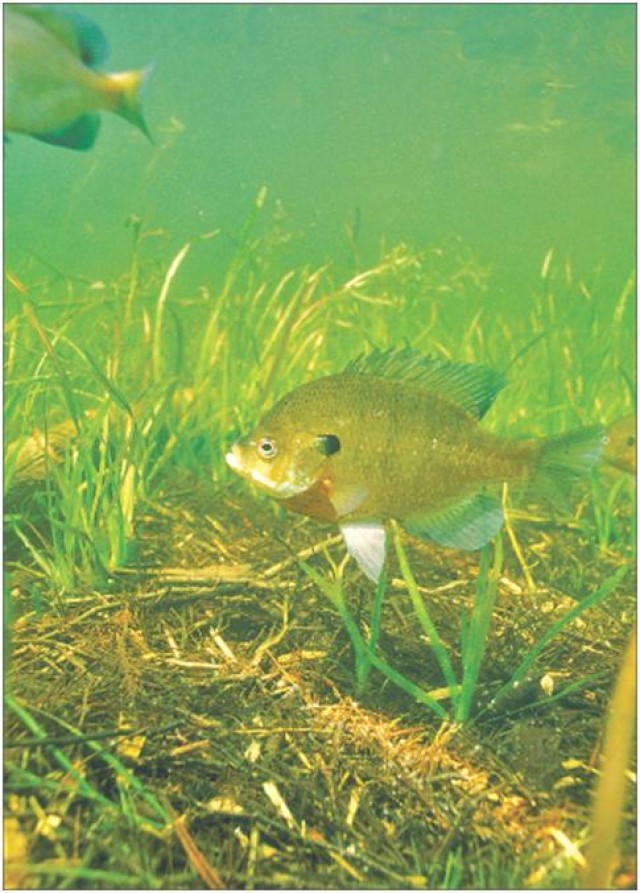ABERDEEN PROVING GROUND, Md. - If you see the bluegill fish coughing, it doesn't have a cold. But it is showing mild distress.
The bluegill's sensitivity to water quality makes it an ideal species for monitoring the cleanliness of area groundwater, said Nate Davis, who oversees the testing.
And Davis should know.
He's been monitoring the reaction of the small freshwater fish, known by many as brim or copper nose, for several years in the groundwater treatment facility in the Edgewood Area of Aberdeen Proving Ground.
He is one of several employees who are helping to make Aberdeen Proving Ground cleaner, and greener.
Davis said that when exposed to toxins, the bluegill will repeatedly flex their gills to expel unwanted irritants, a type of fish coughing.
Another characteristic that makes the bluegill ideal for monitoring is that they tend to remain motionless for long periods of time, minimizing interference with the minute electrical signals used.
The biomonitoring operation takes place at the groundwater treatment facility that was built by the Army and located on the Edgewood Area's Old-O-Field in 1994.
Groundwater is pulled from underground wells, cleaned and discharged into the Gunpowder River and then into the Chesapeake Bay.
During the fish monitoring process, up to eight fish are monitored at a time in compartmentalized chambers. A slipstream of the treated groundwater is continuously funneled through the chambers, explained Jeff Aichroth, the APG Directorate of Public Works employee who oversees the groundwater treatment facility.
If the fish respond normally to the treated water, a tracking line on the biomonitoring screen turns green. If the fish are in distress, the line turns red, said Aichroth.
If more than half of the fish experience severe distress or death, an alarm is triggered which stops the release of treated waste water into the river.
"Then we go into a recirculation cycle and try to figure out what caused the fish to be irritated." explained Aichroth. "Once we figure that out and resolve the issue, we go back to discharging the treated water." Aichroth and Davis said that over the past few years, this has not happened. "We have never lost a fish due to toxicity," Davis said.
After the bluegills have served their three-week tour of duty, Aicroth said they are fattened up and released.
The state-of-the-art early warning system used was developed by Army scientists, for the Army, over a decade ago and is now sold under the commercial name 1090 Intelligent Aquatic BioMonitoring System.
Today it is available and is being used in major U.S. cities, including Washington D.C, where it monitors the capitol's water supplies for signs of unintentional or intentional terrorist introduction of chemicals. This is the first in a year-long series on environmental efforts at Aberdeen Proving Ground. If you have an environmental article you'd like to see published, e-mail editor-apg@conus.army.mil.


Social Sharing